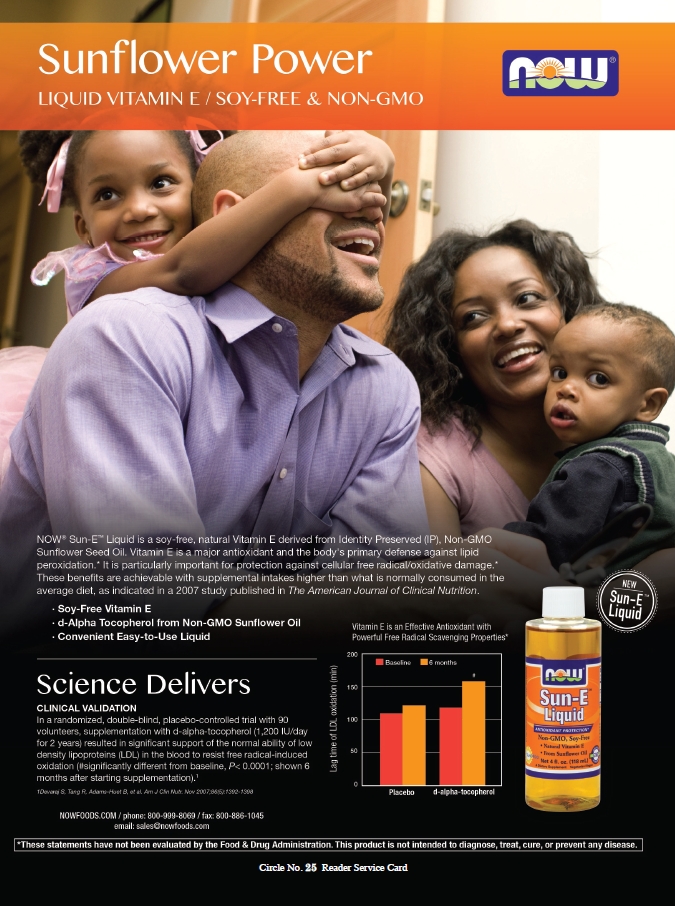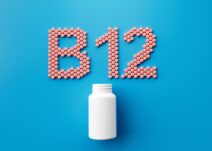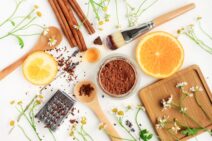If we think of the body as a fortress, then we can liken the body’s endlessly complex immune system to the ramparts, the masonry, the moat and drawbridge (if we’re going medieval), and the soldiers within that fortress. Developments within the immune support category are bringing new techniques to the task of protecting the citadel. Research, meanwhile, provides a foundation for confidence in our continued security. Of course, it helps to remember that all your customers care about (and the customer is king) is that the castle is well defended.
The Immune Health Vanguard
The trends and novelties at the forefront of the immune health category are quite varied. Ingredients of increased interest intermingle with new product formulations and delivery systems to produce an exciting space ripe with innovation.
The use of beta-glucans to help support immune health over both the short and long term is an interesting trend, says Gene Bruno, M.S., MHS, director of category management for Twinlab Corporation, New York, NY. “Beta-glucans can be found in mushrooms as well as certain species of yeast. There is a large body of research on beta-glucans for this purpose,” he says. Baker’s yeast is also a useful source of immune-supporting beta-glucans.
According to Donna Noonan, president of Mushroom Wisdom Inc., Kearny, NJ, her company’s focus is on developing the role of mushrooms in this space. “From our perspective, our researchers continue to be invested and interested in how maitake mushroom and its D-fraction influences and impacts immune balance via a multitude of biochemical pathways,” she says.
Vitamins, minerals and antioxidants will always have a prominent place in the immune health category, according to Jay Levy, director of sales for Wakunaga of America Co., Ltd., Mission Viejo, CA. But new science is allowing other options to gain a foothold. “One distinct example of this is an increased awareness of the role probiotics play in immune support,” Levy says. The rise of these options has coincided with our newfound knowledge of the intestinal microbiome, according to David Winston, R.H. (AHG), founder of Herbalist & Alchemist, Washington, NJ. “We now have a greater insight as to how important probiotics and prebiotics are to a healthy immune system,” says Winston.
Probiotics and digestion are closely linked in the minds of consumers, but the probiotics/immune health message is also starting to break through. In the United States, there is indeed a lot of interest in options like probiotics and prebiotics for immune health, as they offer the potential for something different from traditional offerings, says Geoff Collins, head of marketing for Clasado, Milton Keynes, UK. In Europe, meanwhile, Collins says innovation is slower because the European Food Safety Authority’s regulation of nutrition and health claims is stifling the claims product makers can use. Probiotics do face some debate, he adds, as to whether certain delivery forms can deliver enough live organisms to the gut. He says this raises the profile of prebiotics, which can offer similar and, in some cases, enhanced immune benefits.
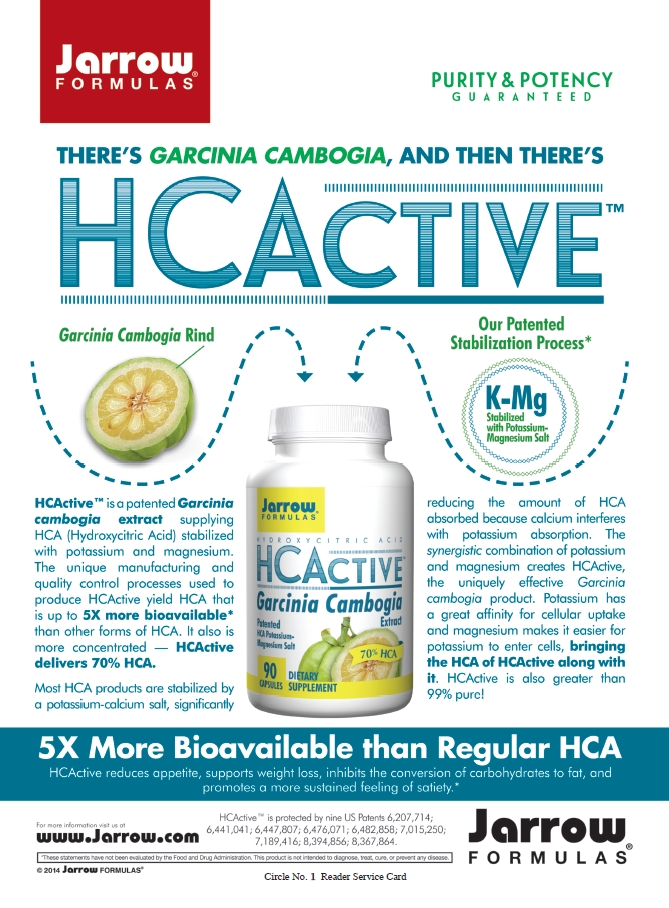 Josée Fortin, naturopath, biochemist and spokesperson for A.Vogel, partner company of Bioforce USA, Ghent, NY, describes one prebiotic supplement derived from whey (Molkosan from A.Vogel). It is rich in L+ lactic acid, which is crucial in maintaining a proper pH environment in the gut. Beneficial bacteria naturally produce lactic acid, Fortin says. But when not enough fiber is consumed in the diet, antibiotics are taken, people are stressed or drinking lots of coffee or other factors are in play, it can negatively impact these bacteria populations. Less lactic acid gets produced, and this makes the bacteria sluggish and able to produce even less lactic acid, further increasing the pH.
Josée Fortin, naturopath, biochemist and spokesperson for A.Vogel, partner company of Bioforce USA, Ghent, NY, describes one prebiotic supplement derived from whey (Molkosan from A.Vogel). It is rich in L+ lactic acid, which is crucial in maintaining a proper pH environment in the gut. Beneficial bacteria naturally produce lactic acid, Fortin says. But when not enough fiber is consumed in the diet, antibiotics are taken, people are stressed or drinking lots of coffee or other factors are in play, it can negatively impact these bacteria populations. Less lactic acid gets produced, and this makes the bacteria sluggish and able to produce even less lactic acid, further increasing the pH.
Fortin says this prebiotic has been improved over the years and now contains a high concentration of lactic acid per dose. “This lactic acid rapidly reestablishes a proper pH environment in the gut, stimulating the growth of good bacteria and helping in the elimination of harmful ones,” she says.
Delivery and stability enhancements have characterized the probiotics space recently. “The enemies of viable probiotics are heat, oxygen and moisture. Unique manufacturing and packaging systems are important because they maximize the potency of the probiotic,” says Scott Bautch, D.C., DACBOH, education and public relations professional for Probium, LLC, Wausau, WI.
According to Bruno, various delivery systems can help maintain probiotic stability and improve delivery. He says some examples are enteric coating, alginate coating, succinylated beta-lactoglobulin coating and a patented technology (BIO-tract from Nutraceutix) that uses a type of pectin to protect probiotics from gastric acid. He says his company uses this last option in its product. Lab data have confirmed, Bruno says, that the probiotics are protected from acid and continually release throughout a testing period that simulates the passage of the supplement through the human digestive tract.
“Customers are becoming more knowledgeable about probiotics, their importance and the different strains and attributes. As their knowledge increases, so does their desire for the most cutting-edge products,” says Julie Dennis, national science educator for Source Naturals/Planetary Herbals, Scotts Valley, CA. One recently developed strain is L. plantarum 299v, which Dennis describes as a unique strain of bacteria already found naturally in the human gut and fermented foods. It has gained momentum in the market because it is resistant to stomach acid and can survive and grow in the human intestine. Dennis says her company’s product using this strain can promote a healthy balance of good bacteria and provide benefits to digestion.
A proprietary form of the probiotic strain 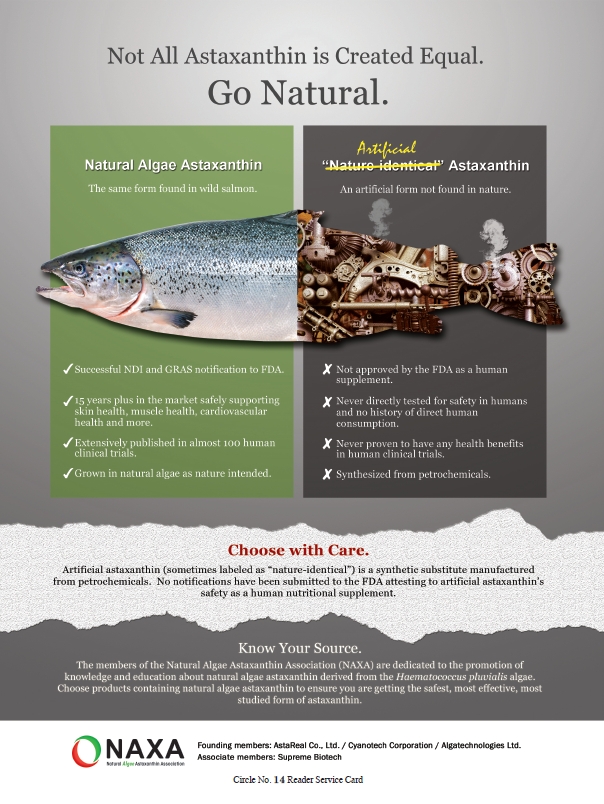 Streptococcus salivarius (BLIS K12 from BLIS Technologies) is a friendly microbe at home in the mouth, says Bautch. Cavities, bad breath and gingivitis can ensue when unfriendly bacteria colonize in the mouth. Bautch says this probiotic forms a protective barrier against these unwanted bacteria.
Streptococcus salivarius (BLIS K12 from BLIS Technologies) is a friendly microbe at home in the mouth, says Bautch. Cavities, bad breath and gingivitis can ensue when unfriendly bacteria colonize in the mouth. Bautch says this probiotic forms a protective barrier against these unwanted bacteria.
There is a current events-driven bifurcation in the immune health market, according to Chris D. Meletis, N.D., director of science and research for Trace Minerals Research, Ogden, UT. “With all the media attention on Ebola and assorted viral illnesses, including the flu, there are two growing and distinct market sectors: prevention and post-exposure mitigation,” he says. Meletis notes, for example, that certain ingredients are valued for their ability to increase secretory IgA, which helps protect the mucous membranes of the respiratory tract. These products fall on the prevention side of the market.
Another noteworthy market trend is the increased focus on immune balance as opposed to immune stimulation, Levy explains. “Scientists now understand that the immune system can be overactive, as well as underactive, and that balance is the key,” he says.
The trend toward combination products is helping address a number of issues consumers sometimes have. “Combination formulas help eliminate confusion over what to take, offer ‘right choice’ solutions with a price point advantage and help address pill fatigue,” says Dorie Greenblatt, director of sales and marketing for American Health, Ronkonkoma, NY. She explains that in formulating these products, it can be difficult to achieve both effective dosing levels and combinations of ingredients that make sense and work together synergistically. The formulation process also has to result in a supplement that consumers can swallow without difficulty.
Greenblatt cites several examples of combination formulas that have worked for her company. One features 1,000 mg of a patented vitamin C (Ester-C) along with six billion CFUs of multi-strain probiotics. Another includes the same vitamin C along with vitamin D3. The product, she says, delivers 10 times the recommended daily level of vitamin D in a form that closely mirrors the vitamin D synthesized in the body. She notes that vitamins C and D support both immune and bone health, providing extra benefit.
Consumers are now looking for an experience in addition to a health benefit from supplements, and the immune category is no exception, according to Larry Robinson, vice president of scientific affairs for Embria Health Sciences, Ankeny, IA. “Therefore, we have seen a continuing trend of novel delivery forms 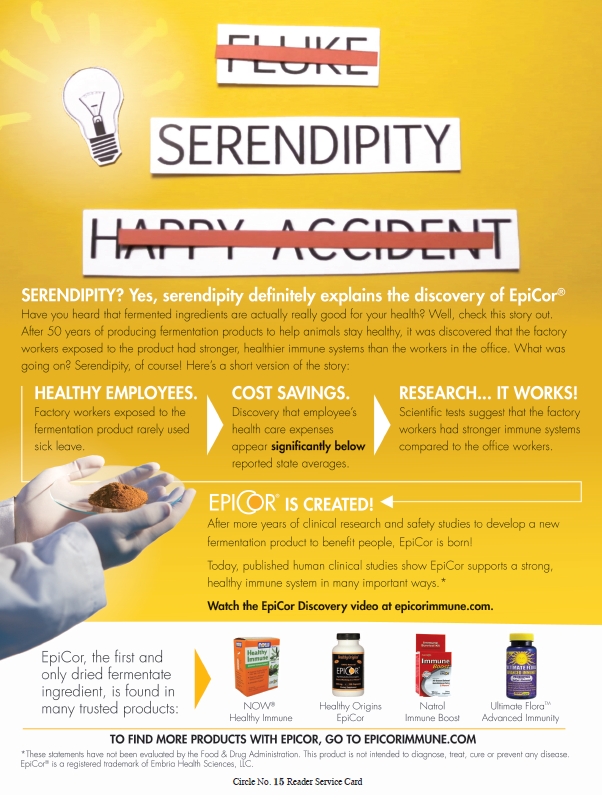 coming to market,” he says. Gummies, especially, along with effervescent drink tablets and mixes, are making their way into more immune supplements that also double as a tasty treat, Robinson says.
coming to market,” he says. Gummies, especially, along with effervescent drink tablets and mixes, are making their way into more immune supplements that also double as a tasty treat, Robinson says.
Retailers know they deal with a wide spectrum of consumers, observes Noonan. As delivery formats continue to emerge in the immune health space, she says to remember that some people will always want to try the latest options, like fizzies, gummies or liquid immunity shots, while others like to stick to their tried-and-true tablets and capsules.
Winston says to also keep an eye out for solid botanical extracts, a delivery format that is less well known. Most come with a honey or glycerin base and are somewhat sweet and viscous. He says his company’s solid extracts use a patented process and are very thick. Because they taste good, product compliance tends to be high. “So for herbs like goji berry, pomegranate, cranberry, hawthorn and blueberry, it’s a wonderful way of making food your medicine and medicine your food,” Winston says.
The winter season and the extra hustle and bustle of the holidays increases the desire for quick and efficient delivery, says Dennis. She cites her company’s dissolvable fizzy wellness wafers as an example of a product that is compact, easy to carry and quick to use.
“The idea of ‘on-the-go’ supplementation has been strong for a while now, especially in the immune category, and I can’t see that going away soon,” says Cheryl Myers, chief of education and scientific affairs at EuroPharma, Inc., Green Bay, WI. She says it seems natural, for instance, for people to prefer a convenient syrup for sore throats, and to seek out easy-to-carry softgels or capsules for antibacterial protection when traveling.
The converging trends of immune support and convenience are pushing ingredients into applications beyond supplements, explains Richard G. Mueller, CEO of Biothera, Eagan, MN. He says his company’s immunity ingredient (Wellmune WGP), a proprietary beta 1,3/1,6 glucan derived from baker’s yeast, can now be found in products in every food and beverage category. He points to recent interest in creating fortified fruit bars, so consumers can take their immune benefits on the go. “Immunity is one of the top benefits moms look for in kid’s drinks, so we are seeing an expansion of children’s beverages and infant formulas that offer more functional benefits,” Mueller adds. He also 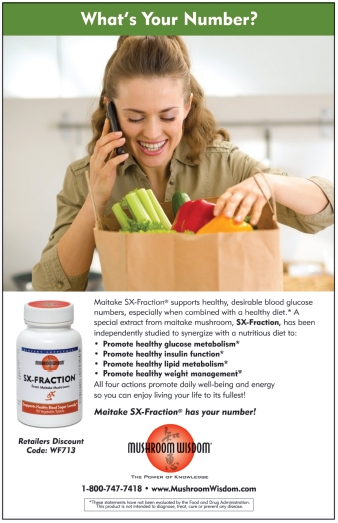 says that in the sports nutrition arena, immune ingredients are being added to supplements and food to help athletes stay healthy while training hard.
says that in the sports nutrition arena, immune ingredients are being added to supplements and food to help athletes stay healthy while training hard.
What They’re Looking For
The average consumer in the immune health category is difficult to define. Some may respond to products that promise general immune support, or reference specific conditions, while others may set out in search of key ingredients that they’ve read about in the context of immune health. Some may look for a combination of both these approaches, and the product that presents itself in the way that resonates most will win out as they shop for immune support.
Bryan Rodriguez, global product manager at Lonza, Allendale, NJ, points out that ingredients like his company’s (ResistAid) often have their logos displayed on products that include them, so that consumers will recognize them and seek them out. He says his company uses science to educate consumers on this ingredient’s ability to modulate immune as opposed to simply boosting immune responses.
Consumers want messaging about proven benefits, delivered with clarity. As a result of this desire, Mueller says, his company’s ingredient logo is featured on the packaging of 85% of the products that include the ingredient. He attributes this to the recognition and trust built up in the ingredient brand. Consumers that know about it associate it with immune health benefits backed by clinical research. Mueller says his company uses social media, its Web site and other marketing avenues to spread the word. These efforts, in turn, help finished product manufacturers better communicate about and market their products. As another example, Greenblatt notes that the clinically demonstrated ability of her company’s patented form of vitamin C (Ester-C) to stay in white blood cells longer is one reason customers will remember the name and have made it a best-seller.
“Thanks to media that reports new scientific findings on a variety of dietary supplements, consumers are becoming more aware of the benefits single ingredients provide,” says Levy.
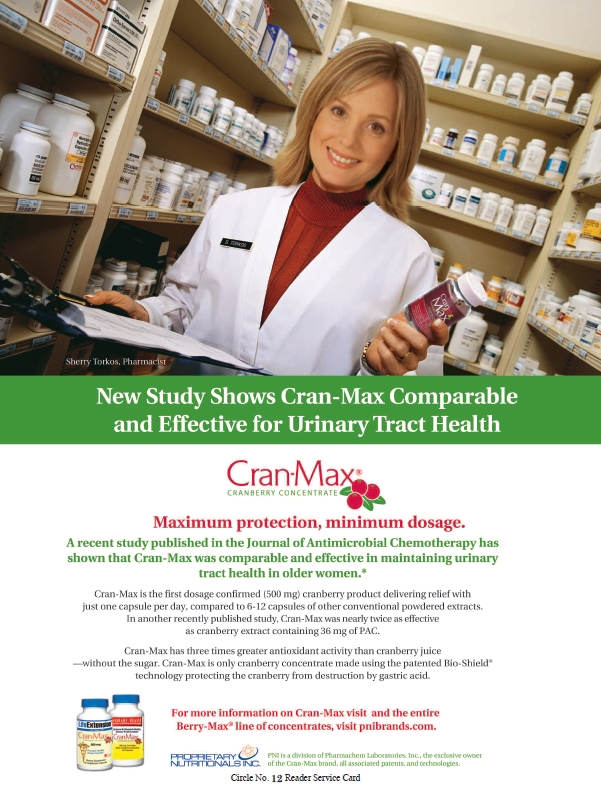 The market is dominated by traditional immune ingredients like vitamin C, zinc and echinacea, with combinations including vitamin D and selenium also growing in popularity, says Collins. Because consumers seek these out specifically, they should be clearly highlighted on packaging, he feels. “Since the majority of immune products contain these ingredients, purchasing decisions often then revert to confidence in a particular brand, or for more savvy consumers, an examination of the levels provided, with high potency products providing an added attraction,” says Collins.
The market is dominated by traditional immune ingredients like vitamin C, zinc and echinacea, with combinations including vitamin D and selenium also growing in popularity, says Collins. Because consumers seek these out specifically, they should be clearly highlighted on packaging, he feels. “Since the majority of immune products contain these ingredients, purchasing decisions often then revert to confidence in a particular brand, or for more savvy consumers, an examination of the levels provided, with high potency products providing an added attraction,” says Collins.
Consumers in the healthy and natural foods channel tend to be better educated about their options, Bruno says. As a consequence, they are often looking for more than just a general immune support claim from products. They want to see specific ingredients on the label such as those already mentioned. Bruno explains why several of these are fundamental. Zinc affects multiple aspects of the immune system, he says, from the barrier of the skin to cell function (1). Selenium helps provide antioxidant protection against free radicals (2). Vitamin C supports the function of immune cells, and a deficiency can result in suboptimal immune function (3). Echinacea purpurea has been shown to enhance immune responses in clinical trials, Bruno says (4).
“More and more consumers are becoming familiar with some of the ‘super star’ ingredients for immune support like echinacea, elderberry and vitamin C, but more often than not, especially if someone’s not feeling well, they may just go for the product name that addresses their concerns,” Dennis says.
The approach consumers take depends on a number of factors. It depends, for one thing, on just how well a particular ingredient or nutrient is associated with immune support, claims Myers. As an example, she believes most people connect echinacea with cold and flu or respiratory relief, so it’s common to see products marketed with the ingredient in the actual product name. However, customers new to the world of natural supplements may just want to reduce symptoms and feel better. For those people, companies need to signal the relief they are looking for on the front of the box, either in the product name or its main tagline, Myers says.
Consumers look for health claims that 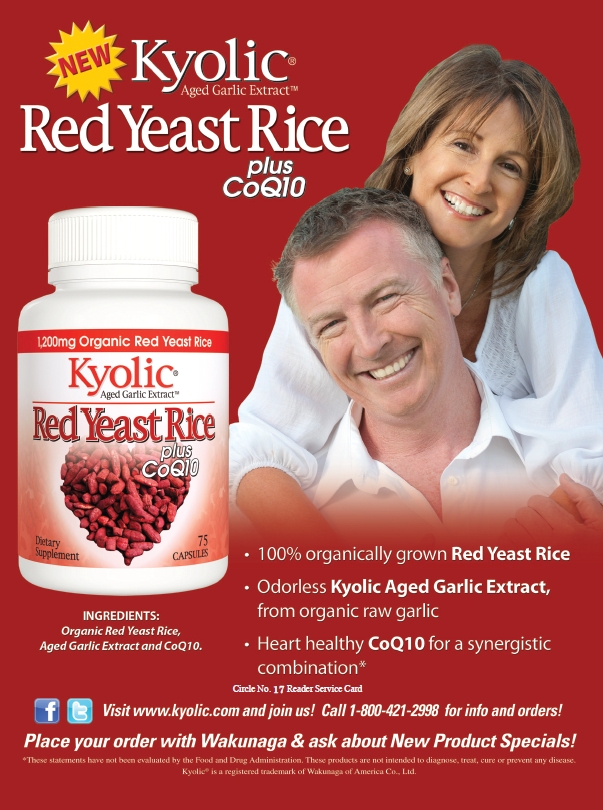 resonate with their underlying needs, Robinson says, and well-substantiated branded ingredients like his company’s (EpiCor) provide manufacturers with the option to pursue both general “support” claims and more targeted claims. He believes ingredients like EpiCor that are tested on healthy adults give manufacturers confidence in appealing to a general consumer base, rather than a small niche.
resonate with their underlying needs, Robinson says, and well-substantiated branded ingredients like his company’s (EpiCor) provide manufacturers with the option to pursue both general “support” claims and more targeted claims. He believes ingredients like EpiCor that are tested on healthy adults give manufacturers confidence in appealing to a general consumer base, rather than a small niche.
There are a number of ways retailers can make sure consumers find what they’re looking for in immune support. Though the winter season may be the most important, Greenblatt suggests reminding customers that immune health should be kept in mind through all 12 months. “Immune health doesn’t go on vacation, and neither should supporting it every day of the year,” she says.
One way to do this, says Myers, is to host as many “Are you ready for cold and flu season?”promotions as possible. “Invite natural experts to your store who can easily explain the different ingredients and their indications to your customers,” she advises.
“I think a lot of retailers are doing a great job at calling attention to their immune sections. It is, after all, one of the main reasons many people make it into their aisles, especially during the winter season,” Dennis says. Though shelf space is usually tight, she says to consider how cross merchandising can help support sales of immune products. For example, placing popular probiotics not only in the digestive care section but also in immune health may open more customers’ eyes.
Retailers should also look into cross-merchandising products that contain popular ingredients to promote a multi-ingredient approach to immune support, Bruno suggests. “This need not be arduous for the consumer, since many of these ingredients can be found in the same product,” he says. An exception to this is the probiotics space, as typically strains like lactobacilli and bifidobacteria are not combined with other immune health ingredients, since they won’t remain stable. Other strains, like the oral health probiotic discussed earlier, should not be immediately swallowed in a capsule but rather allowed to dissolve in the mouth, he notes.
 Pay attention to how brands support their products, as Noonan says that heavier marketing budgets and strategic use of social media can increase the likelihood customers will ask for a product in the store. She also advises retailers to review their immune support sections, ensuring that that best-sellers stay put while also giving space to products with trendy ingredients or delivery systems. “It’s about offering a precisely calibrated selection so no one feels left out and turnover is swift,” Noonan says.
Pay attention to how brands support their products, as Noonan says that heavier marketing budgets and strategic use of social media can increase the likelihood customers will ask for a product in the store. She also advises retailers to review their immune support sections, ensuring that that best-sellers stay put while also giving space to products with trendy ingredients or delivery systems. “It’s about offering a precisely calibrated selection so no one feels left out and turnover is swift,” Noonan says.
She also cautions retailers to remain vigilant against making unlawful claims about disease states when it comes to supplements. Sticking with phrases like “seasonal immune support” is one way to play it safe. Retailers and their staffs can certainly pursue their own research into immune health options via Pubmed.gov and other outlets. They can then make this information available for customers to further their own understanding.
Bautch sums up the immune support equation from the individual’s perspective. He says, “For the consumer, the challenge will be to stay informed about what is important to support your body’s ability to stay healthy, and the differences in quality of the products being promoted in the market.”
Exploring Immune Support
Staying healthy is a pressing matter for everybody, so let’s dive right into some of the latest research on natural immune support. A portion of these discussions examine how these nutrients and ingredients work to our benefit in the body.
The greatest missed opportunity in the effort to maintain wellness, Meletis believes, is not focusing on the consumption of green and red foods that are rich in phytonutrients. He refers to a study that reviewed the role of phytonutrients in modulating and maintaining immune function (5).
The authors make several important points within the review, noting that as natural products, phytonutrients possess none of the side effects usually associated with chemotherapy or radiation treatment. They are also relatively cheap compared to other health care options. Some of the more important bioactive phytonutrients, per the study, are polyphenols, terpenoids, resveratrol, flavonoids, anthocyanins and carotenoids. Phytonutrients are known for their anti-microbial, antioxidant, anti-inflammatory, anti-aging, hepatoprotective, neuroprotective, hypotensive and analgesic properties, among many other types of benefits.
Research teams worldwide are bursting with enthusiasm for  probiotics. Research has demonstrated that probiotics strengthen the intestinal barrier and stimulate the production of immune cells, says Levy. He shares a recent study that provides more detail, as it showed that some probiotic strains can enhance the non-specific cellular immune response (6). This includes the activation of natural killer (NK) cells, antigen-specific cytotoxic T-lymphocytes and macrophages, and the release of various cytokines depending on the probiotic strain and dose level. Levy points to another study in the journal New Microbiology that demonstrated some lactobacillus strains can help regulate intestinal inflammation, as well as inhibit the growth of pathogenic bacteria (7).
probiotics. Research has demonstrated that probiotics strengthen the intestinal barrier and stimulate the production of immune cells, says Levy. He shares a recent study that provides more detail, as it showed that some probiotic strains can enhance the non-specific cellular immune response (6). This includes the activation of natural killer (NK) cells, antigen-specific cytotoxic T-lymphocytes and macrophages, and the release of various cytokines depending on the probiotic strain and dose level. Levy points to another study in the journal New Microbiology that demonstrated some lactobacillus strains can help regulate intestinal inflammation, as well as inhibit the growth of pathogenic bacteria (7).
Meletis cites a study from earlier this year that examined the oral administration of a lactobacillus strain in mice (8). Mice that received this probiotic, which is derived from a traditional Japanese pickle, dealt better with a flu infection. They retained their body weight better and saw less severe symptoms.
Meletis also cites a review of the way probiotics can benefit the immune health of the elderly. Bifidobacterium populations in the gut are known to decrease with age, the study explains (9). By stimulating growth of these beneficial bacteria through probiotic and prebiotic interventions, adaptive immune response can be improved and inflammatory secretions can be reduced. However, more human studies are needed to determine if risks of illness and disease can be reduced, according to the authors.
According to Collins, studies like these on bifidobacteria supplementation in the elderly dovetail with the findings of previous clinical trials on his company’s prebiotic ingredient (Bimuno). One study showed the ingredient can boost bifidobacteria populations in the gut (10). “Importantly, though, the study also demonstrated for the first time that it is actually possible to reset the microflora of the elderly and, in so doing, turn back the immune clock in such individuals,” he says.
The inside slant on another prebiotic ingredient is provided by Rodriguez. “The innate arm of the immune system is non-specific and targets anything that is viewed as foreign to the body, whereas the adaptive system targets specific foreign substances,” he says. He explains that his company’s ingredient can call upon both the non-specific and adaptive responses in healthy adults, according to research. It can enhance the appropriate response to a foreign body, as opposed to indiscriminately stimulating other arms of the immune system.
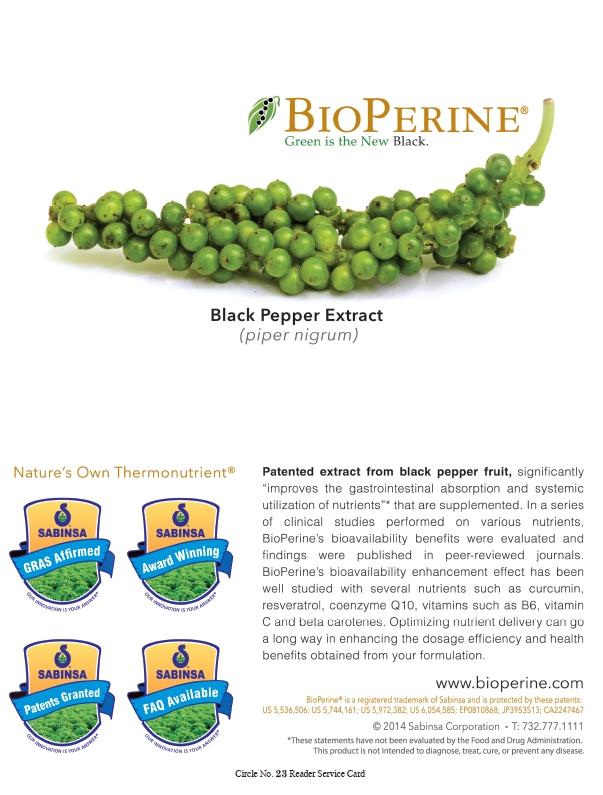 Rodriguez says this ingredient is composed of galactose and arabinose, which are common structural components of the cell walls of foreign bacteria. This means that immune cells recognize these components and bind to the ingredient at receptor sites, allowing it to act as a biological response modifier. As a prebiotic, it has the ability to serve as a fermentable substrate that can support beneficial bacteria populations in the large intestine. These beneficial microflora can then proliferate and produce substances that provide localized protection against pathogenic bacteria, Rodriguez says. He adds that the ingredient also contains polyphenolic flavonoids that provide antioxidant support, representing a third mechanism of action.
Rodriguez says this ingredient is composed of galactose and arabinose, which are common structural components of the cell walls of foreign bacteria. This means that immune cells recognize these components and bind to the ingredient at receptor sites, allowing it to act as a biological response modifier. As a prebiotic, it has the ability to serve as a fermentable substrate that can support beneficial bacteria populations in the large intestine. These beneficial microflora can then proliferate and produce substances that provide localized protection against pathogenic bacteria, Rodriguez says. He adds that the ingredient also contains polyphenolic flavonoids that provide antioxidant support, representing a third mechanism of action.
The antibody response after individual’s received a tetanus vaccine was enhanced when 1.5 g/day of this ingredient was taken, according to a recent study (11). In related news, Rodriguez’s company recently was awarded a patent for the use of ResistAid in conjunction with flu vaccines. Specifically, the patent covers the larch arabinogalactan’s ability to improve the adaptive immune response when taken prior to, during and after exposure to the vaccine.
Robinson says that published research on his company’s prebiotic is showing that its benefits derive from how it impacts the gut. “Research suggests that EpiCor helps the beneficial bacteria bifidobacteria and lactobacilli proliferate and grow while also increasing butyrate, a short-chain fatty acid known to support colon health,” he says.
According to Greenblatt, her company’s patented vitamin C, which takes a form called calcium ascorbate, has been clinically shown to stay in white blood cells longer than other forms of vitamin C. White blood cells, or leukocytes, are a fundamental part of our immune responses. One study’s authors concluded that this form of vitamin C may be better retained by leukocytes due to the presence of key vitamin C metabolites (12).
Medicinal mushrooms are quite at home in the immune health category. Levy notes that maitake, reishi and shiitake mushrooms have been used for centuries in Asia to strengthen immunity, and that modern research shows them to be rich sources of lentinan, which helps fight infection. Beta-glucans enhance the immune system’s quick response to bacterial infection, and the active hexose correlated compound (AHCC) found in mushrooms is an immunomodulator and can increase the antibody response to flu vaccines. Also, Levy says a recent study suggests that the polysaccharides in reishi mushrooms can act as free radical scavengers (13).
Botanicals and botanical extracts are also a 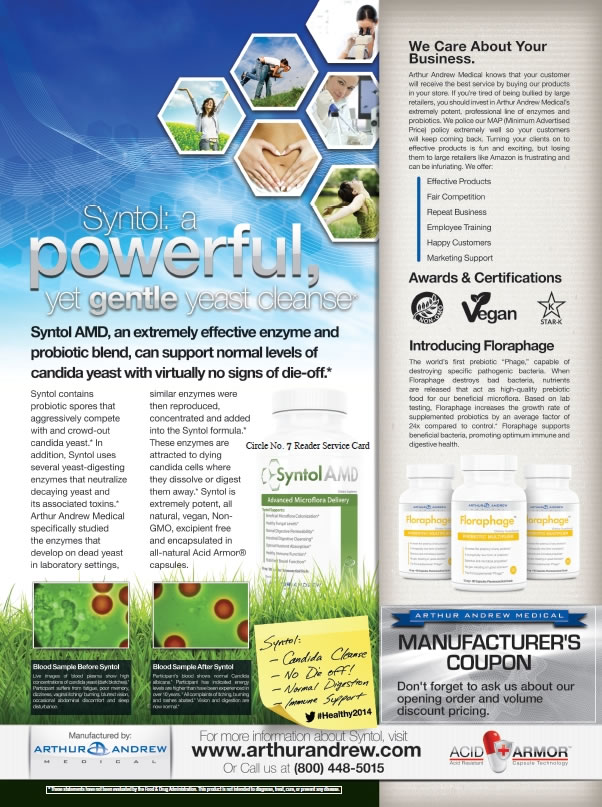 hot focus area in immune health research. Aged garlic extract (AGE), according to Levy, was the subject of a recent study at the University of Florida (14). It was found to reduce the duration of the common cold or bout with the flu up to 61%. “According to the researchers, this was because AGE boosted the number of T-cells, especially natural killer (NK) cells,” Levy says.
hot focus area in immune health research. Aged garlic extract (AGE), according to Levy, was the subject of a recent study at the University of Florida (14). It was found to reduce the duration of the common cold or bout with the flu up to 61%. “According to the researchers, this was because AGE boosted the number of T-cells, especially natural killer (NK) cells,” Levy says.
A powerful antioxidant and antibacterial due to high levels of a compound called carvacrol, oregano has also been the subject of research, Levy explains. He says it is thought that the oxygen molecules in carvacrol combine with water in the body to create heat that kills bacteria. It has been shown to kill a variety of infectious microbes, including salmonella, E. coli and several types of staphylococcus. A recent animal study found that oregano, along with sage, can modulate innate immunity by impacting nitric oxide and phagocyte activity, according to Levy (15).
Balancing the immune system through the use of a blend of plant sterols and sterolins has been extensively investigated, Levy says. Beta-sitosterol, found in saw palmetto, is one example of the fatty substances that make up the sterol family. Sterolins, he explains, are sterols with a glucose molecule attached, which improves their absorption in the body. Sterols and sterolins are more active taken together than apart. Though fruits and vegetables provide these compounds, many people don’t eat enough, so Levy says supplementation can be of benefit. Sterols and sterolins like those found in a product from Levy’s company can benefit those with chronic infections, stress-induced immune suppression, allergies or autoimmune conditions. “Even healthy people whose immunity is suppressed after a bout of intense exercise have been found to benefit from the immune regulating powers of sterols and sterolins,” Levy says.
“I think one of the unsung heroes of respiratory health is boswellia. As a natural anti-inflammatory, people may assume it is just for muscle pain, but boswellia reduces inflammation that affects the lungs and allergic responses, too,” Myers says.
It’s not surprising, she goes on to say, to find out that boswellia may help people with asthma. Unlike some medicines that block leukotriene receptors, Myers says boswellia blocks their formation, thereby reducing inflammation, constriction and other issues related to respiratory symptoms. AKBA, a compound in boswellia, has been shown to suppress inflammatory responses to cigarette smoke, and Myers says it may help prevent other environmental asthma triggers. Research has shown that boswellia inhibits mast cells, which reduces the release of histamine, Myers explains, and can reduce the sinus pressure and mucus production that come with allergy issues (16).
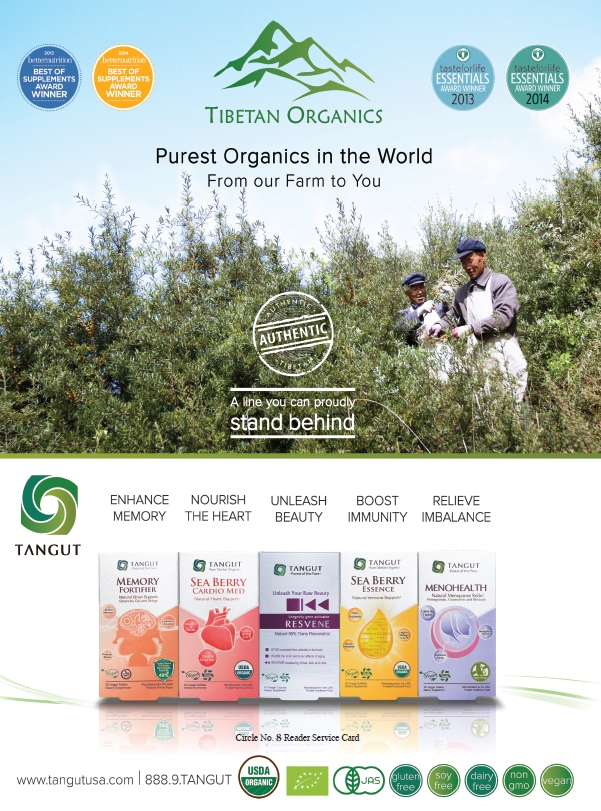 Selecting the right boswellia is important, as there are different species of boswellia and different boswellic acid compounds, according to Myers. AKBA is beneficial, while others like beta-boswellic acid can promote inflammatory responses. She says that researchers have claimed it could have negative health consequences. Her company includes a boswellia extract developed in India (BosPure) in its products that is screened to reduce beta-boswellic acid to less than 5%. She adds they’ve combined this ingredient with curcumin, another anti-inflammatory. “Boswellia and curcumin may not be the first botanicals people think of for immune or respiratory support, but I think they could certainly be the next nutrients on the map,” Myers says.
Selecting the right boswellia is important, as there are different species of boswellia and different boswellic acid compounds, according to Myers. AKBA is beneficial, while others like beta-boswellic acid can promote inflammatory responses. She says that researchers have claimed it could have negative health consequences. Her company includes a boswellia extract developed in India (BosPure) in its products that is screened to reduce beta-boswellic acid to less than 5%. She adds they’ve combined this ingredient with curcumin, another anti-inflammatory. “Boswellia and curcumin may not be the first botanicals people think of for immune or respiratory support, but I think they could certainly be the next nutrients on the map,” Myers says.
The proprietary baker’s yeast beta-glucan discussed earlier has several recent studies demonstrating its efficacy at mobilizing the immune system, according to Bruno. One of those, published in the Journal of Dietary Supplements, describes how the ingredient might impact athletes after intense exercise, says Mueller. A statistically significant reduction in days with upper respiratory tract infection symptoms after athletic competition was discovered (17). Mueller says the ingredient also boosted mucosal immunity (as measured by salivary immunoglobulin A), which represents the first line of defense against respiratory illness. “Lost practice days and reductions in performance have been the norm for athletes, since intense exercise temporarily suppresses the immune system,” he says, adding that this ingredient may allow athletes to stay healthy after intense workouts and competitions.
The mechanism of action behind immune health mainstay echinacea has been under the microscope. According to Fortin, clinical studies on her company’s echinacea product have shown it to be effective for dealing with cold and flu. “In those studies they found that the alkylamides (the active principles in echinacea) bind to viruses and prevent them from invading cells and multiplying,” she says. Fortin adds that her company’s echinacea has also been shown to have antibacterial and anti-inflammatory properties, and is safe to take long term because it regulates rather than stimulates.
|
What’s Selling: Immune Health Wealth of Health Mariposa Market Nature Select Foods, Baily’s Naturals |
|
Perhaps the most impressive research done on echinacea from Fortin’s company was a double-blind, placebo-controlled study with 755 participants, she says. It took place over four months and required subjects to take three to five doses per day. Those taking a placebo had 59% more colds and flu than those taking the supplement. She says that the numbers were even more divergent for smokers, those with high stress levels and those with a lack of sleep. For those who did get sick, a 62.7% reduction in the severity of symptoms was reported (18).
Many other herbs, Winston says, can help enhance the health of the gut, in turn supporting the immune system. Some examples are bitters, turmeric, cat’s claw, chamomile, calendula, kudzu, marshmallow and fenugreek. “Herbs that can stimulate macrophages and other aspects of what is called the ‘surface’ immune system are useful for helping to fight off acute infections such as colds, influenza, sinus infections and bronchitis,” Winston says. Andrographis is one of the more promising herbs in this category, as it benefits the immune response and may also have antibacterial and antiviral activity, he says.
Other herbs are classed as amphoterics, according to Winston. These help regulate a disordered immune system, helping to down-regulate hyperactive responses like allergies and enhance immunity when it is not functioning well enough, such as in certain disease states. “People often wonder how these herbs know what to do. They don’t. They work by strengthening and nourishing the immune system so that it can regain its normal self-regulatory capacity,” Winston says. Herbs that fall in this category include reishi, American and Asian ginseng, astragalus, schisandra, ashwagandha and licorice.
Another type of herb to note are those that possess anti-inflammatory activity and can help inhibit excessive immune responses. They may be helpful in cases of allergy or autoimmune disease, Winston says. They include turmeric, sarsaparilla, gotu kola, huang qin and chai hu. Remember that professionals should always be consulted when considering an immune health regimen.
For more research in this fascinating category, Bautch suggests interested parties turn to The Linus Pauling Institute (lpi.oregonstate.edu), as it has been a leader in research on enhancing immunity. WF
|
Select Immune Health Products American Health: Ester-C (with and without Citrus Bioflavonoids) in multiple delivery formats including capsules, vegetarian capsules, vegetarian tablets, liquid, powder, chewable, effervescent; Ester-C 1000 mg Advanced Antioxidant Formula with Whole Food Complex; Ester-C 1000 mg with 2000 mg of Cranberry, Cranberry & Immune Health Complex; Ester-C 1000 mg with 6 Billion Probiotics, Digestion & Immune Health Complex; Ester-C 1000 mg with 5000 IU D3 Bone & Immune Health Complex. Bioforce USA: Echinaforce, Molkosan, Bronchosan, Allergy Relief, Sinus Relief, Soothing Pine Cough Drops. Biothera: Wellmune WGP. Clasado: Bimuno GOS (second generation Galacto-oligosaccharides). Embria Health Sciences: EpiCor dried fermentate and eXselen selenium yeast. EuroPharma, Inc.: Bacteril, Viragen, Bos-Cur, ViraPro, Bronchial Clear and Bronchial Clear Liquid, Triple Immune Support, Aller-TCM. Herbalist & Alchemist: VX Compound, Astragalus/Echinacea Compound, Echinacea/Goldenseal Compound, Sinus Support Compound, Ultimate Echinacea, Andrographis, Isatis, Coptis, Elderberry Solid Extract, Osha, Myrrh, Immune Adapt capsules or liquid, 7 Precious Mushrooms, Ginseng/Schisandra Compound, Immune Balance, Fitness Formula, Adrenal Balance Compound, Immune Balance, Turmeric, Gotu Kola, Sarsaparilla, Unprocessed Rehmannia. Lonza: ResistAid larch arabinogalactan (LAG). Mushroom Wisdom: Maitake D-Fraction PRO 4X, Maitake D-Fraction capsules or liquid extract, Grifron Maitake, Mushroom Emperors, Super Coriolus (Turkey tail), Super Chaga, Super Royal Agariucs, Super Cordyceps, Super Meshima, Super Reishi, Super Shiitake, Super Tremella. Probium, LLC: Probiotics including Single Blend 6B, Dual Blend 6B, Multi Blend 12B, Ten Strain Blend 50B, Pro-Cran Blend 6B with Cranberry Fruit Extract & D-Mannose, Wildberry Chewable 6B – For Kids 2+, Oral Blis Combo 4B. Source Naturals/Planetary Herbals: Source Naturals—Wellness Fizz, Wellness Formula, Wellness EpiCor, Wellness Immune Chewable, Wellness Shot, Wellness Colloidal Silver, Wellness Breathe Free. Planetary Herbals—Reishi Mushroom Supreme, Shiitake Mushroom Supreme. Trace Minerals Research: Greens Pak, Reds Pak, Probiotic 55. Twinlab: Twinlab Immunity Booster, Twinlab Time-Release Probiotic, Twinlab Triple-Action Oral Health Dot. Valensa International: Immunum Pro. Wakunaga of America Co., Ltd.: Kyolic Aged Garlic Extract (AGE), Kyolic Formula 103, Kyo-Dophilus, Moducare, ModucareCF. |
References
1. “Zinc,” WebMD, Mar. 19, 2013, http://www.webmd.com/vitamins-and-supplements/lifestyle-guide-11/supplement-guide-zinc, accessed Oct. 6, 2014.
2. U. Tinggi, “Selenium: Its Role as Antioxidant in Human Health,” Envrion. Health. Prev. Med. 13(2), 102-108 (2008).
3. “Vitamin C (Ascorbic Acid),” WebMD, Dec. 13, 2012, http://www.webmd.com/vitamins-and-supplements/lifestyle-guide-11/supplement-guide-vitamin-c, accessed Oct. 6, 2014.
4. “Echinacea,” WebMD, http://www.webmd.com/vitamins-supplements/ingredientmono-981-echinacea.aspx?activeIngredientId=981&activeIngredientName=echinacea&source=1, accessed Oct. 6, 2014.
5. C. Gupta, D. Prakash, “Phytonutrients as Therapeutic Agents,” J. Complement. Integr. Med. [Epub ahead of print] (2014).
6. R. Ashraf, N.P. Shah, “Immune System Stimulation by Probiotic Microorganisms,” Crit. Rev. Food. Sci. Nutr. 54(7), 938-56 (2014).
7. P.S. Hsieh, et al., “Potential of Probiotic Strains to Modulate the Inflammatory Responses of Epithelial and Immune Cells In Vitro,” New Microbiol. 36(2), 167-79 (2013).
8. N. Waki, et al., “Oral Administration of Lactobacillus Brevis KB290 to Mice Alleviates Clinical Symptoms Following Influenza Virus Infection,” Lett. Appl. Microbiol. 58(1), 87-93 (2014).
9. G. Pérez Martínez, C. Bäuerl, M.C. Collado, “Understanding Gut Microbiota in Elderly’s Health will Enable Intervention through Probiotics,” Benef Microbes. 5(3), 235-46 (2014).
10. J. Vulevic, et al., “Modulation of the Fecal Microflora Profile and Immune Function by a Novel Trans-galactooligosaccharide Mixture (B-GOS) in Healthy Elderly Volunteers,” Am. J. Clin. Nutr. 88(5), 1438-46 (2008).
11. J.K. Udani, “Immunomodulatory Effects of ResistAid™: A Randomized, Double-blind, Placebo-controlled, Multidose Study,” J. Am. Coll. Nutr. 32(5), 331-8 (2013).
12. M.A. Moyad, et al., “Vitamin C Metabolites, Independent of Smoking Status, Significantly Enhance Leukocyte, But Not Plasma Ascorbate Concentrations,” Adv. Ther. 25(10), 995-1009 (2008).
13. M. Shi, Z. Zhang, Y. Yang, “Antioxidant and Immunoregulatory Activity of Ganoderma Lucidum Polysaccharide (GLP),” Carbohydr. Polym. 95(1), 200-6 (2013).
14. M.P. Nantz, et al., “Supplementation with Aged Garlic Extract Improves Both NK and Gamma Delta T Cell Function and Reduces the Severity of Cold and Flu Symptoms: A Randomized, Double-blind, Placebo-controlled Nutrition Intervention,” Clin. Nutr. 31(3), 337-44 (2012).
15. D.A. Vattem, et al., “Dietary Supplementation with Two Lamiaceae herbs-(Oregano and Sage) Modulates Innate Immunity Parameters in Lumbricus Terrestris,” Pharmacognosy Res. 5(1), 1-9 (2013).
16. M.Z. Siddiqui, “Boswellia Serrata, a Potential Antiinflammatory Agent: An Overview,” Indian. J. Pharm. Sci. 73(3), 255-61 (2011).
17. B.K. McFarlin, et al., “Baker’s Yeast Beta Glucan Supplementation Increases Salivary IgA and Decreases Cold/flu Symptomatic Days after Intense Exercise,” J Diet Suppl. 10(3), 171-83 (2013).
18. M. Jawad, et al., “Safety and Efficacy Profile of Echinacea purpurea to Prevent Common Cold Episodes: A Randomized, Double-Blind, Placebo-Controlled Trial,” Evidence-Based Complementary and Alternative Medicine, Article ID 841315, 7 pages, http://dx.doi.org/10.1155/2012/841315 (2012).
Published in WholeFoods Magazine, November 2014


